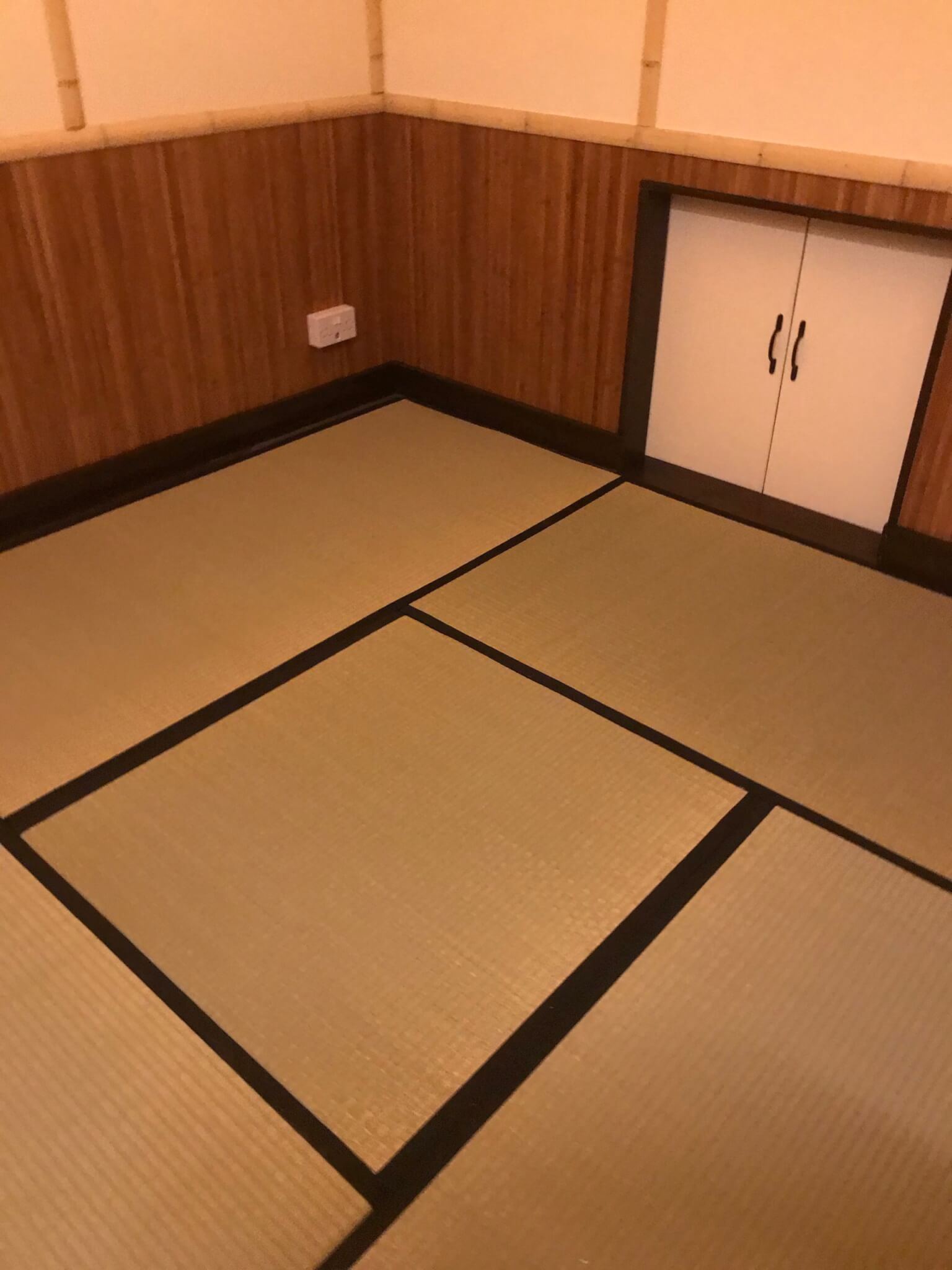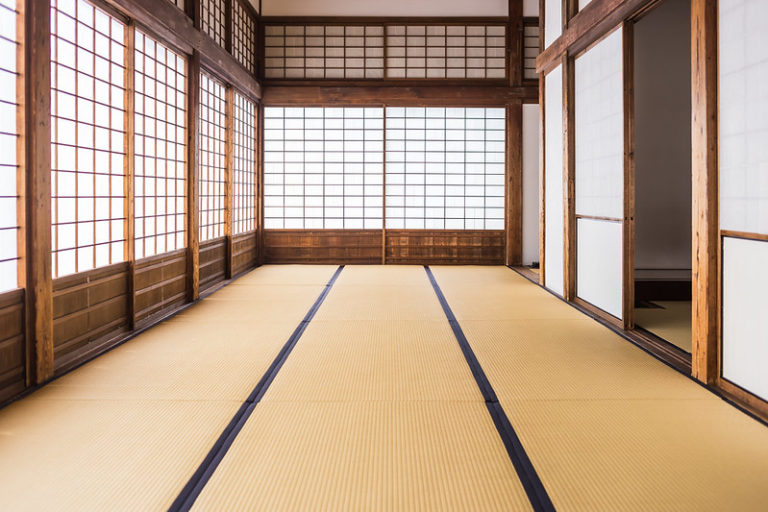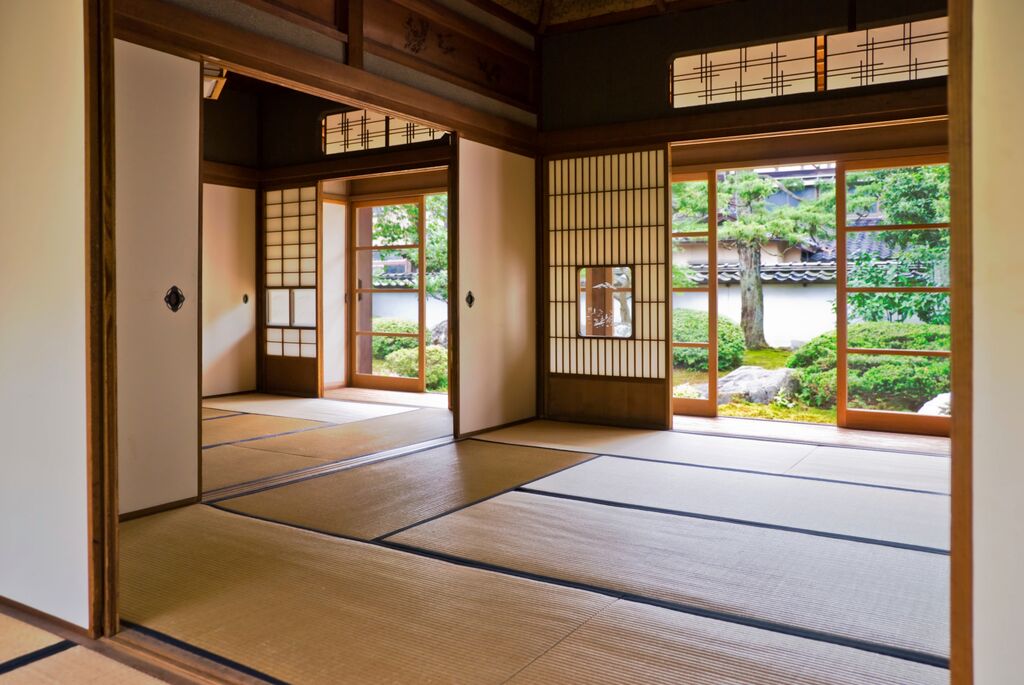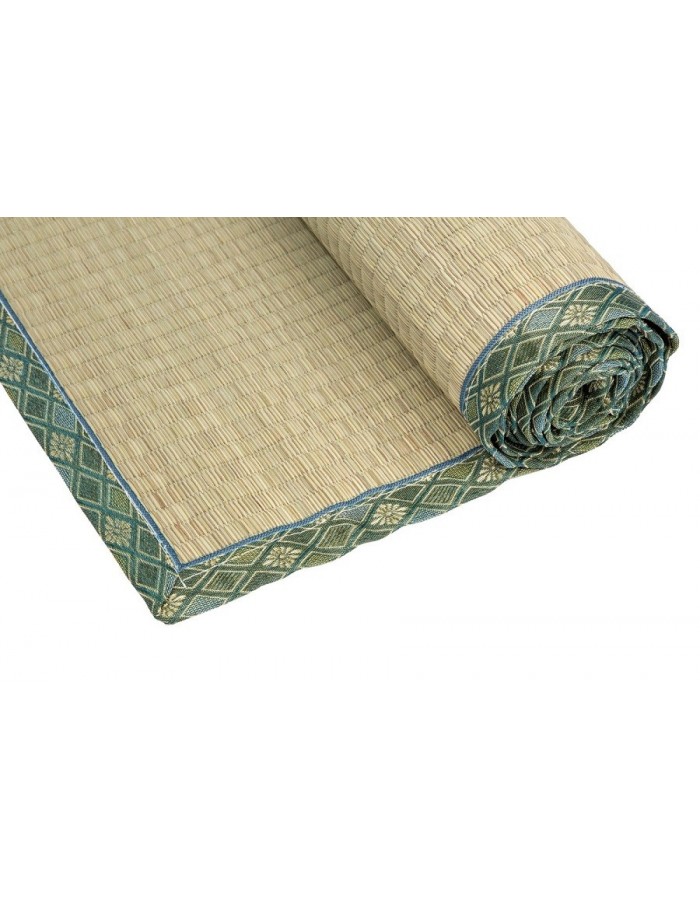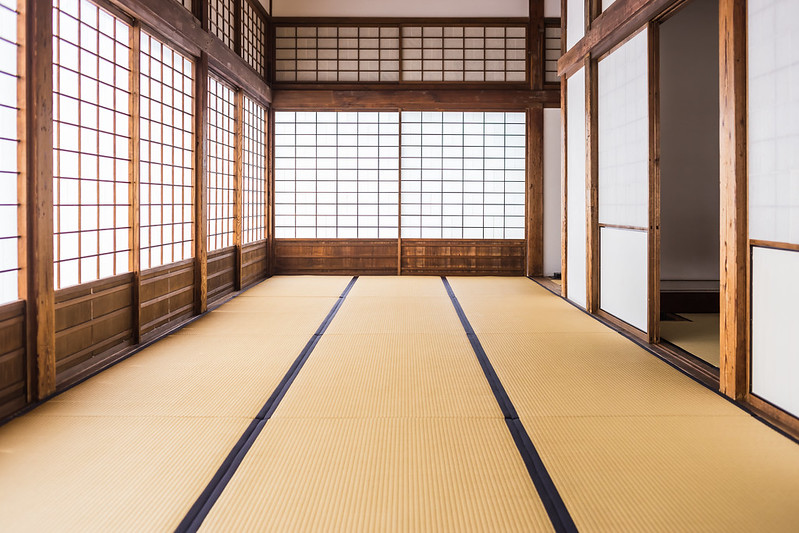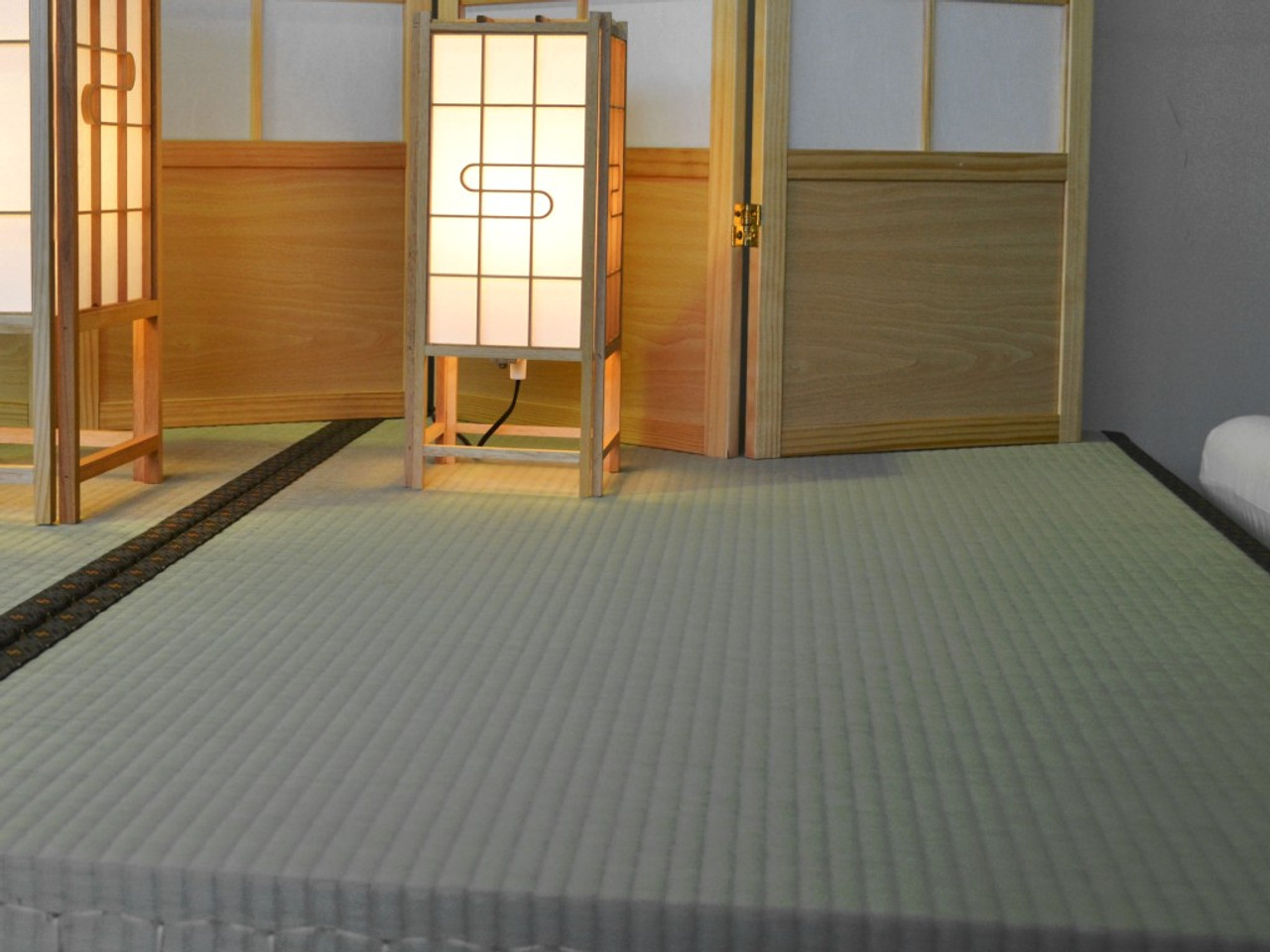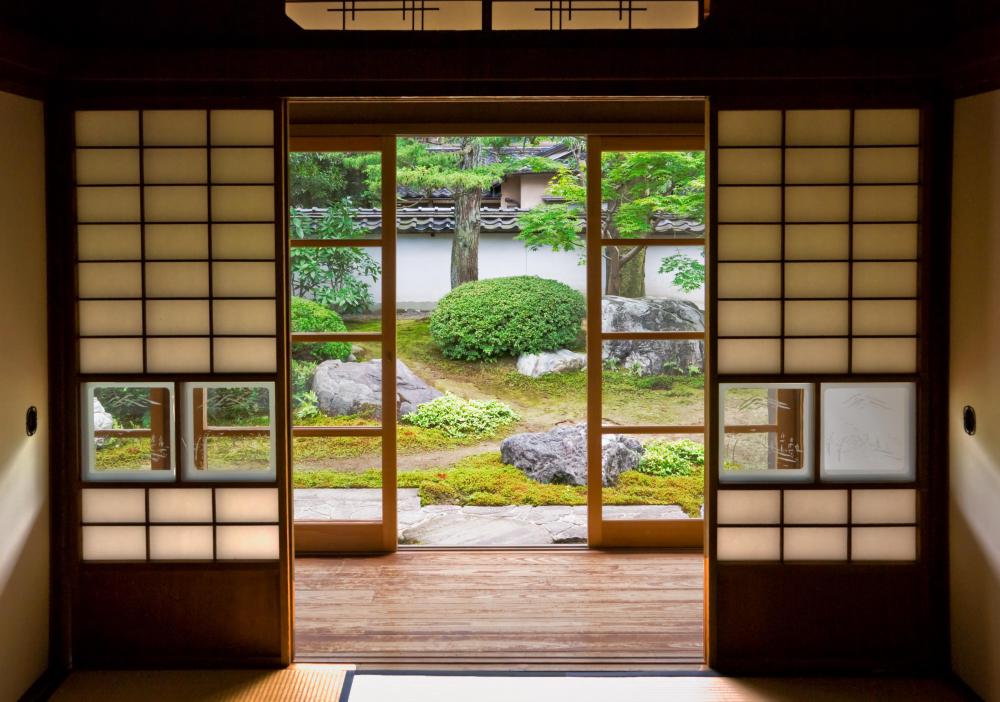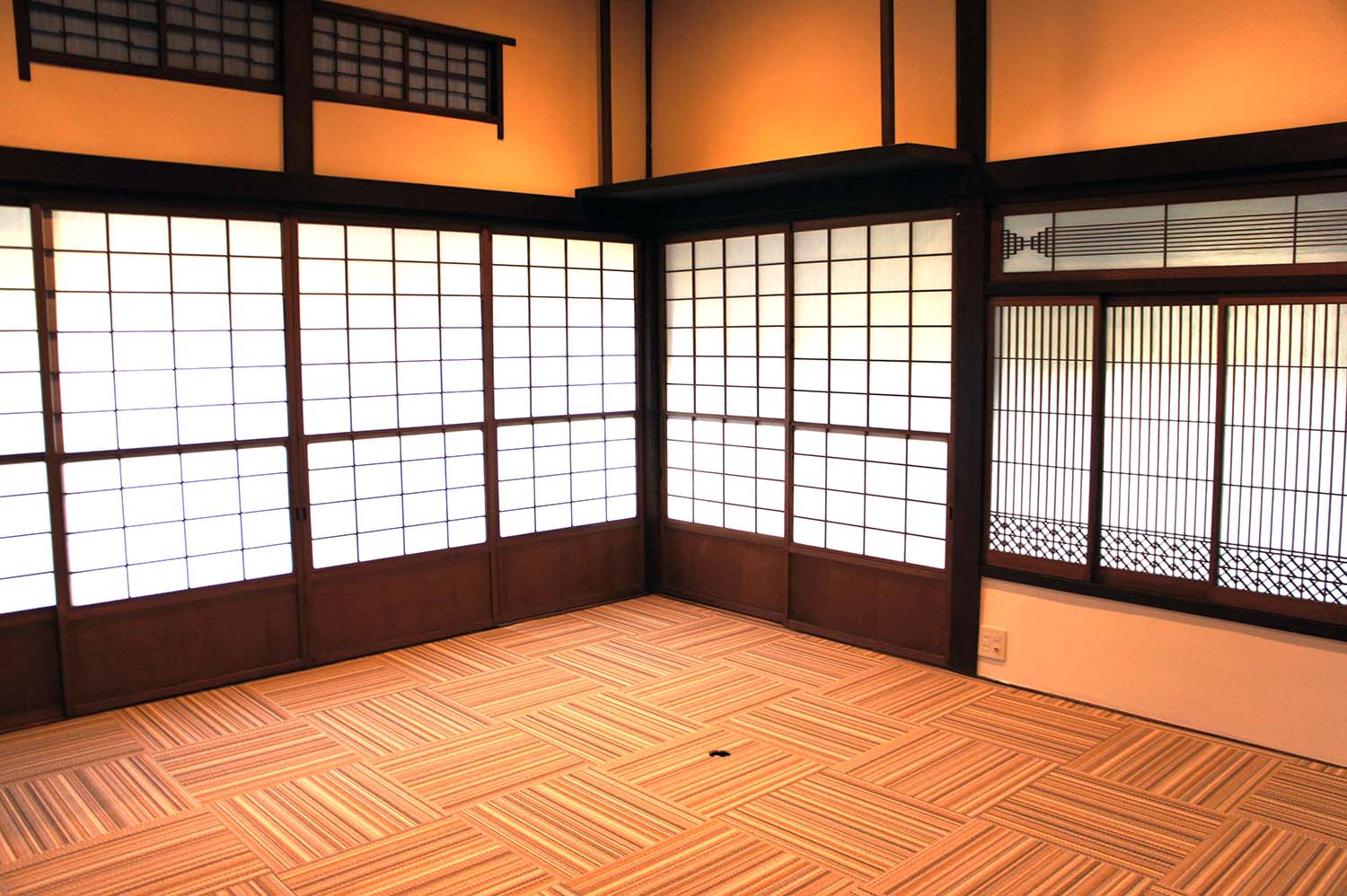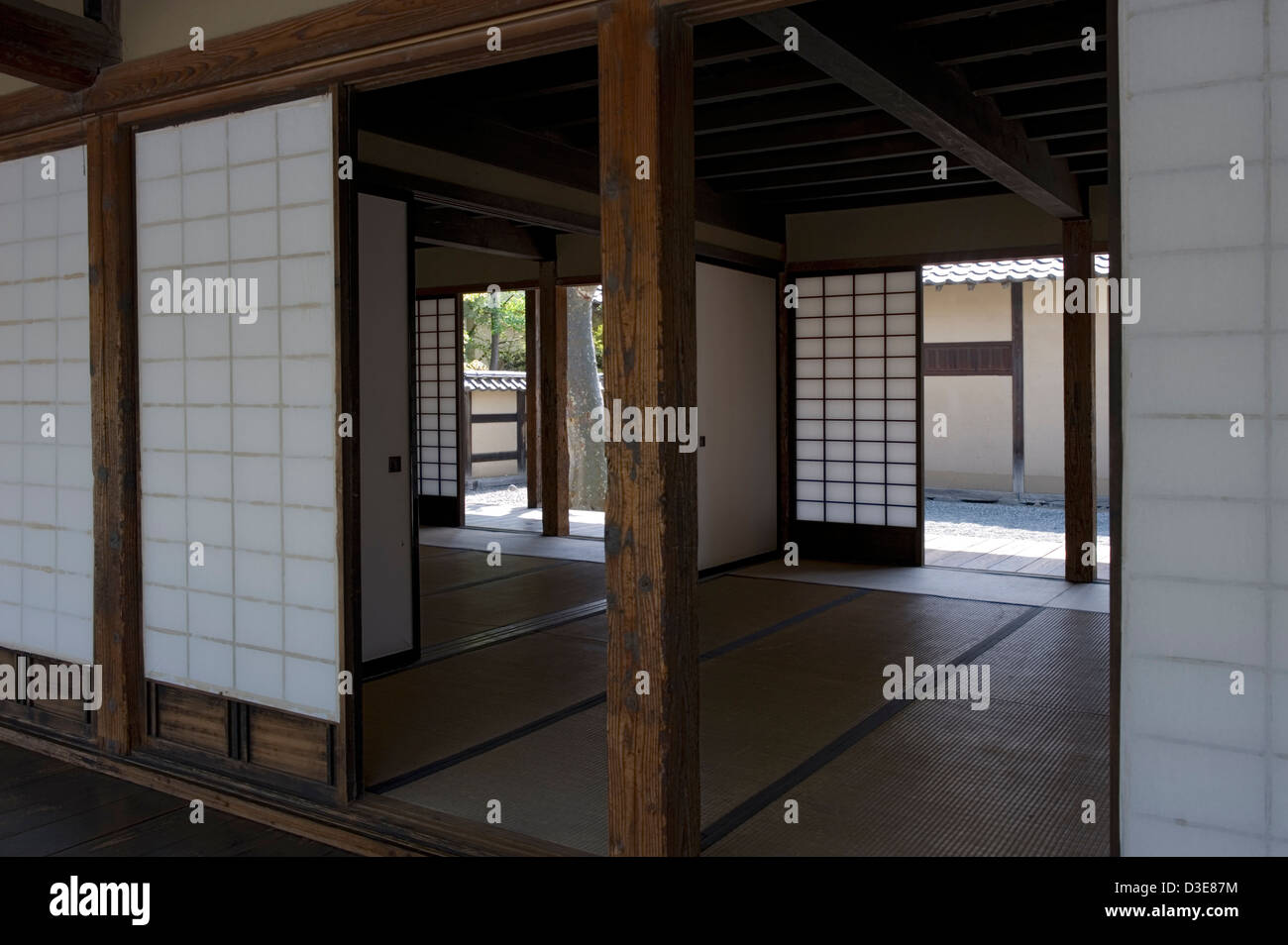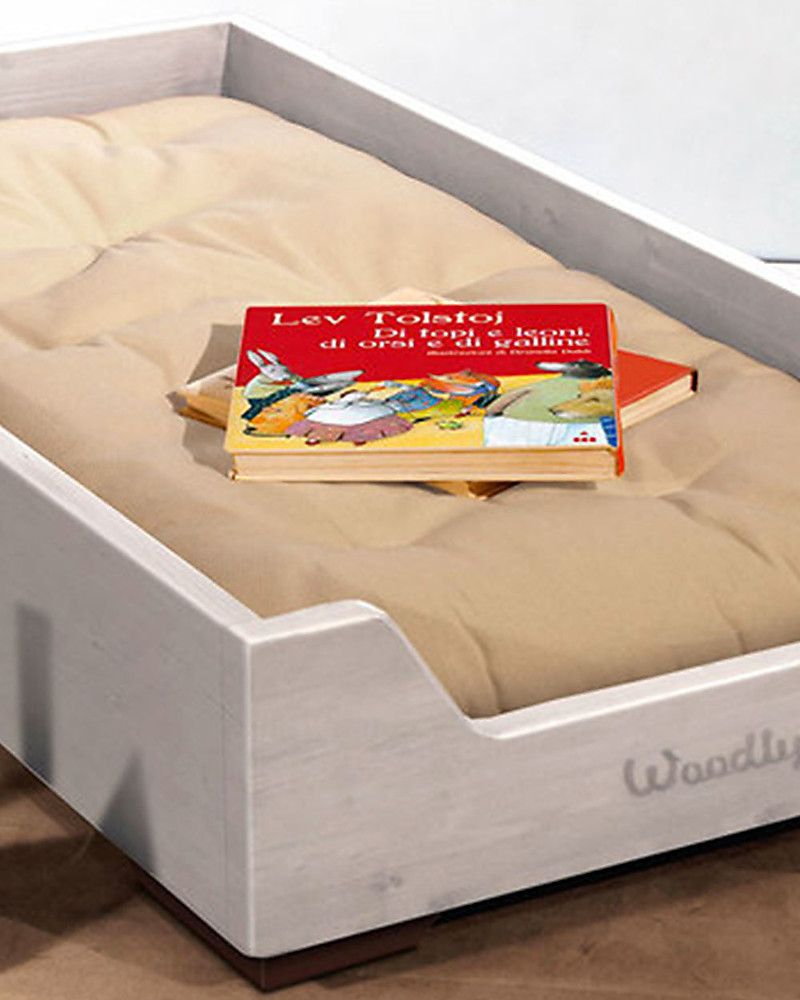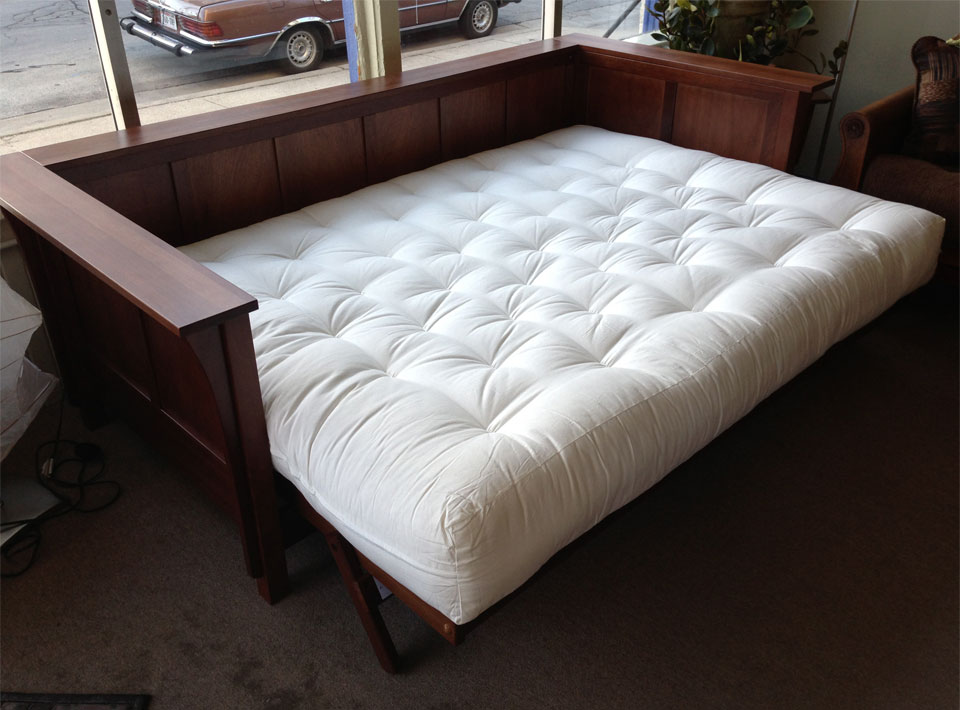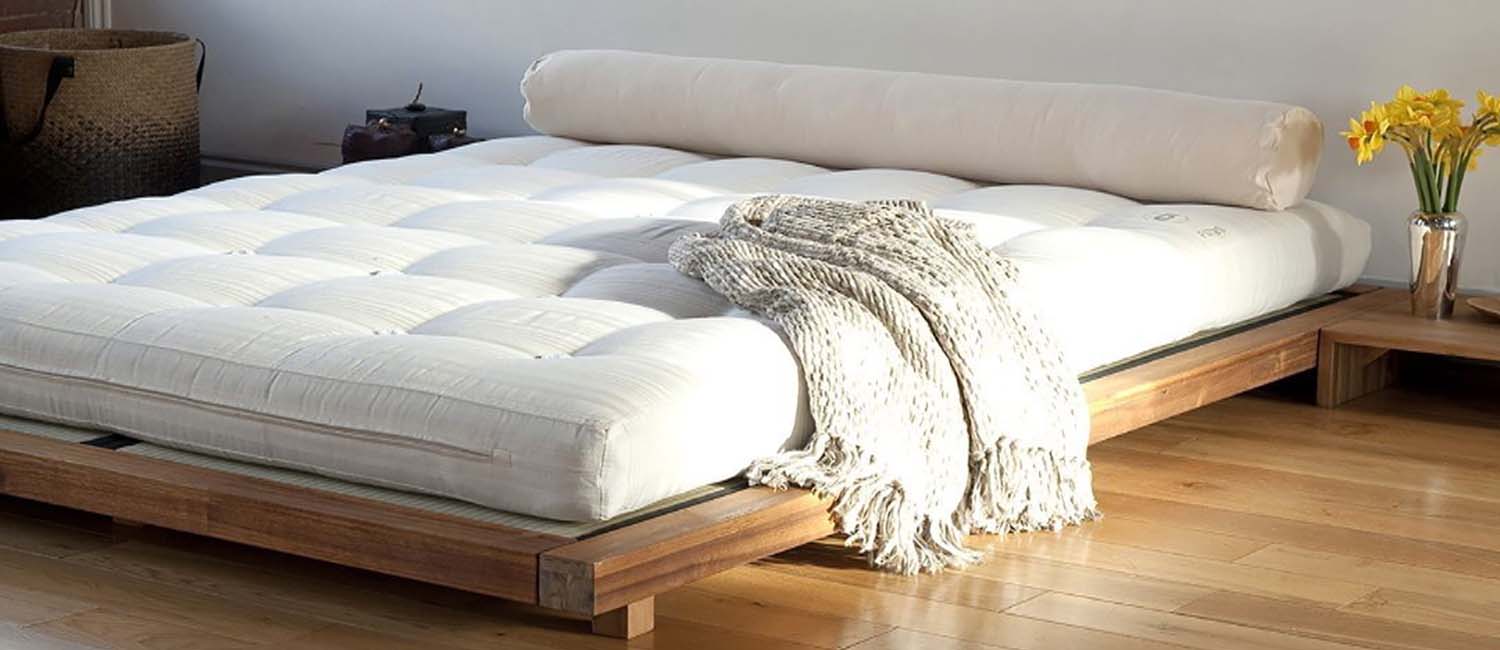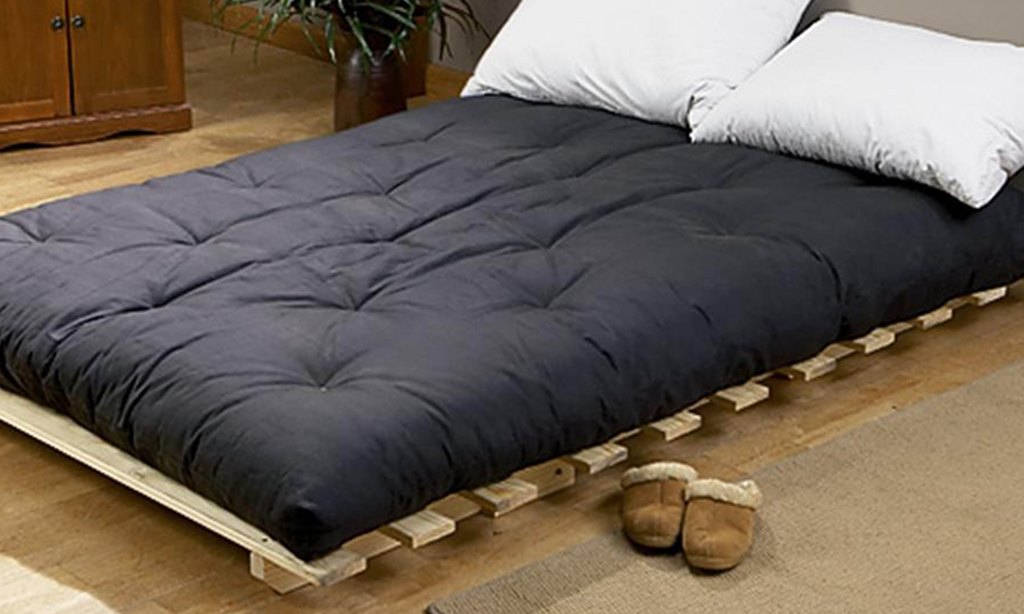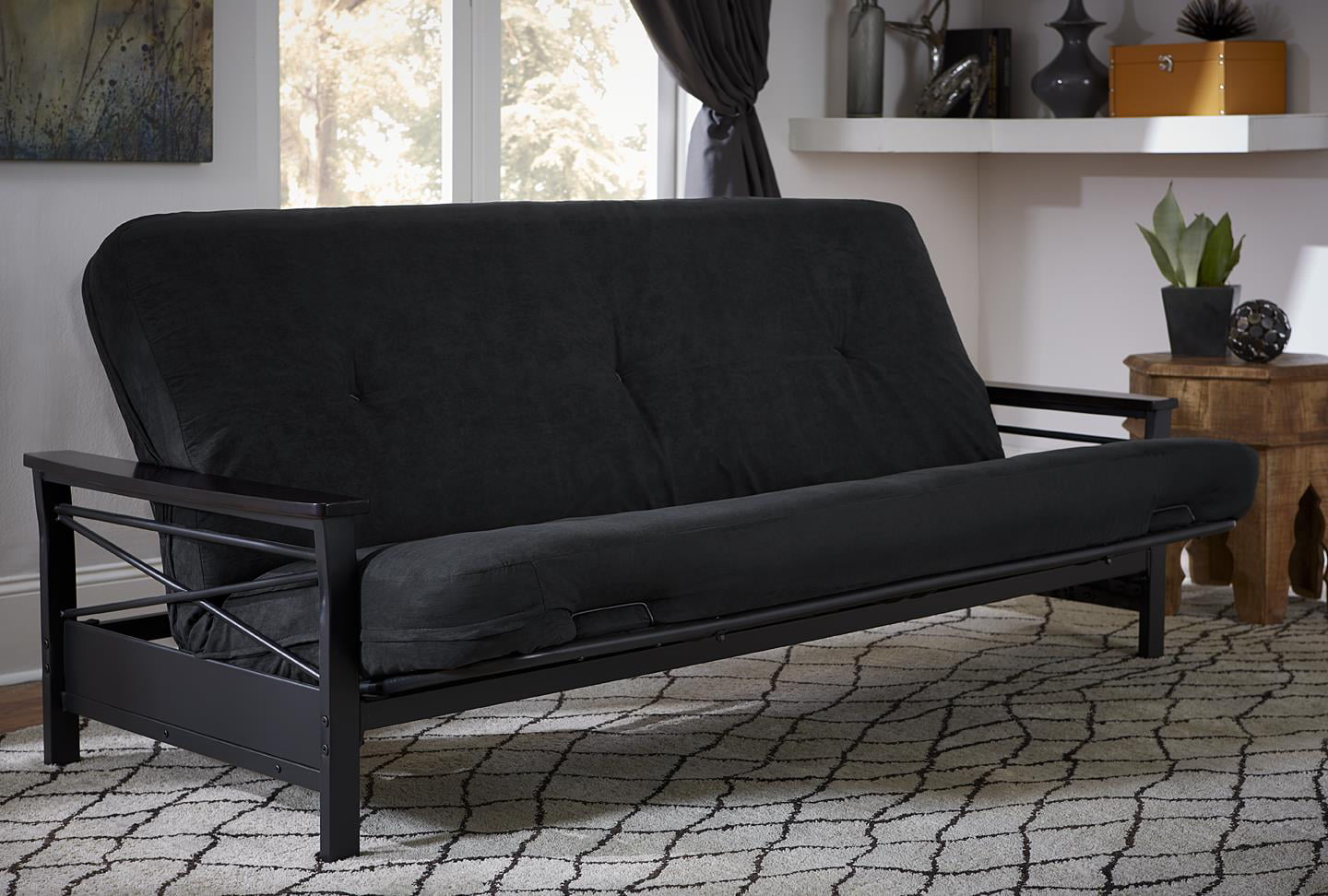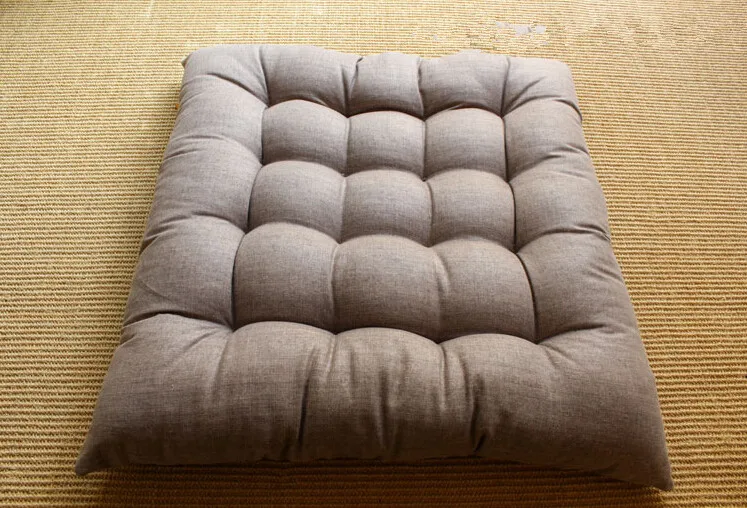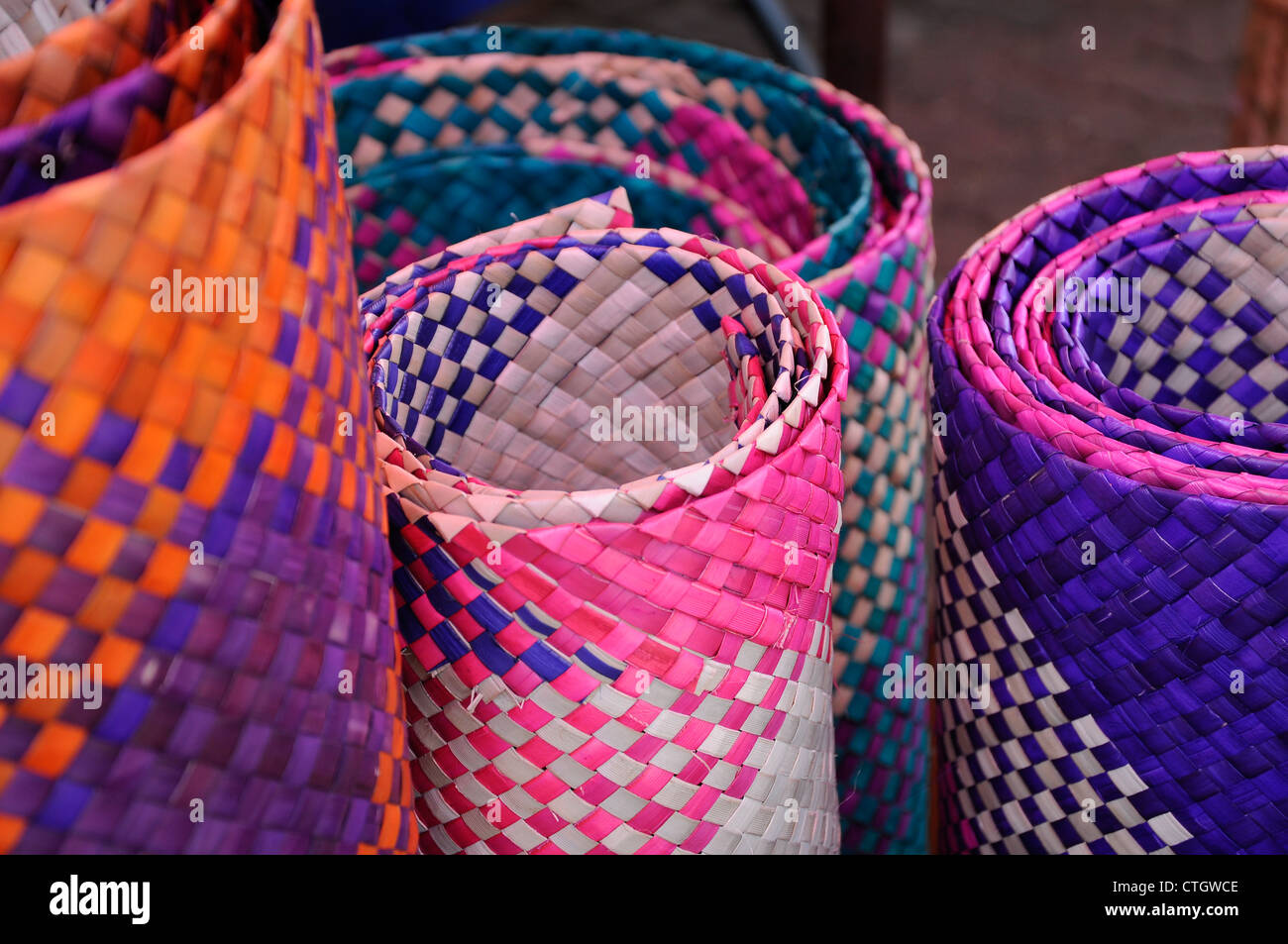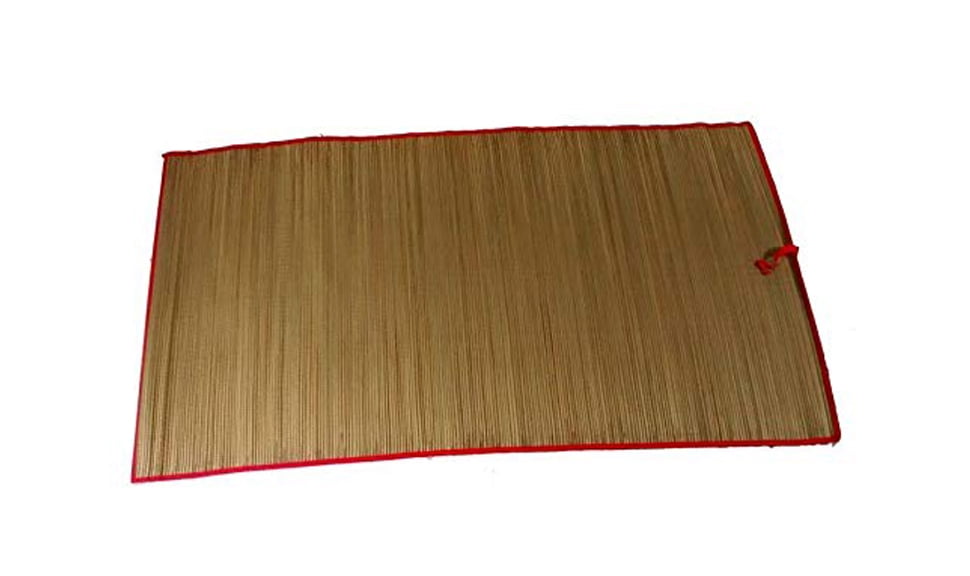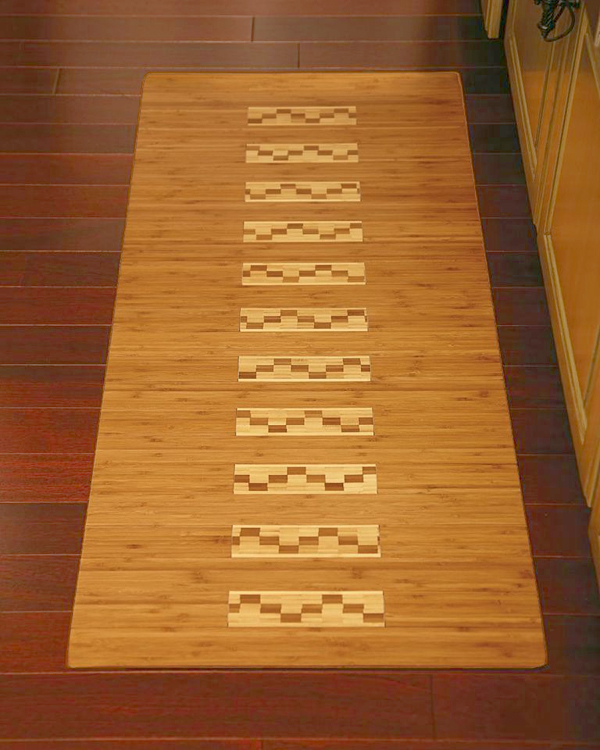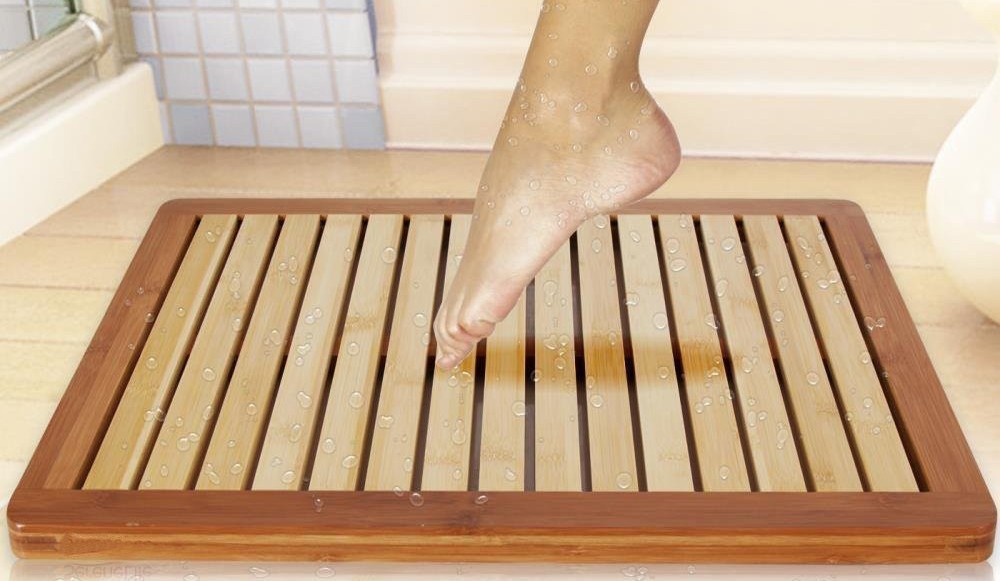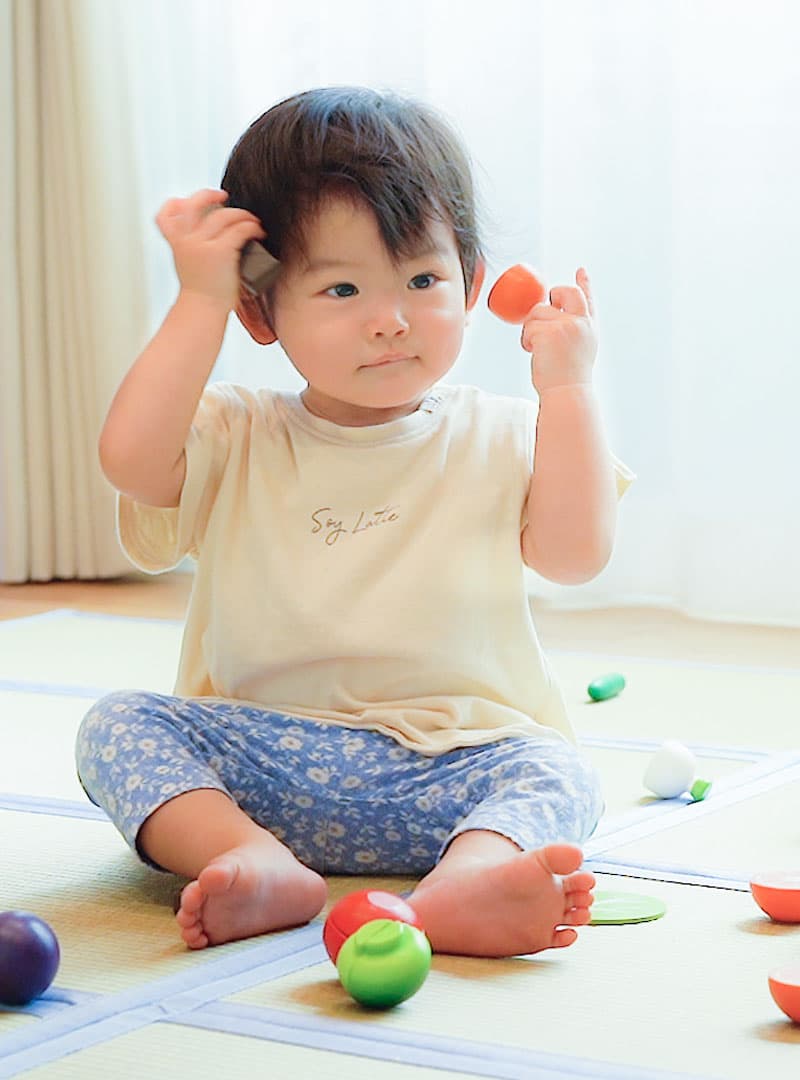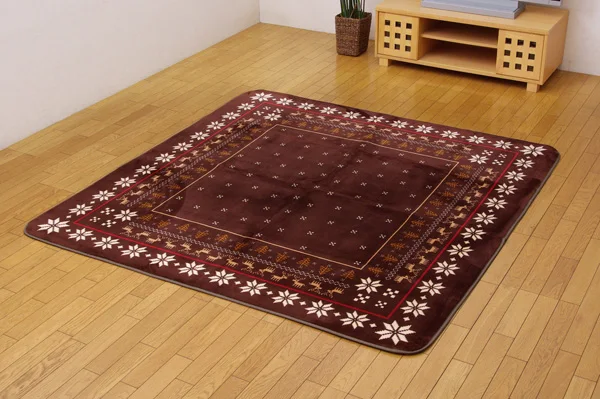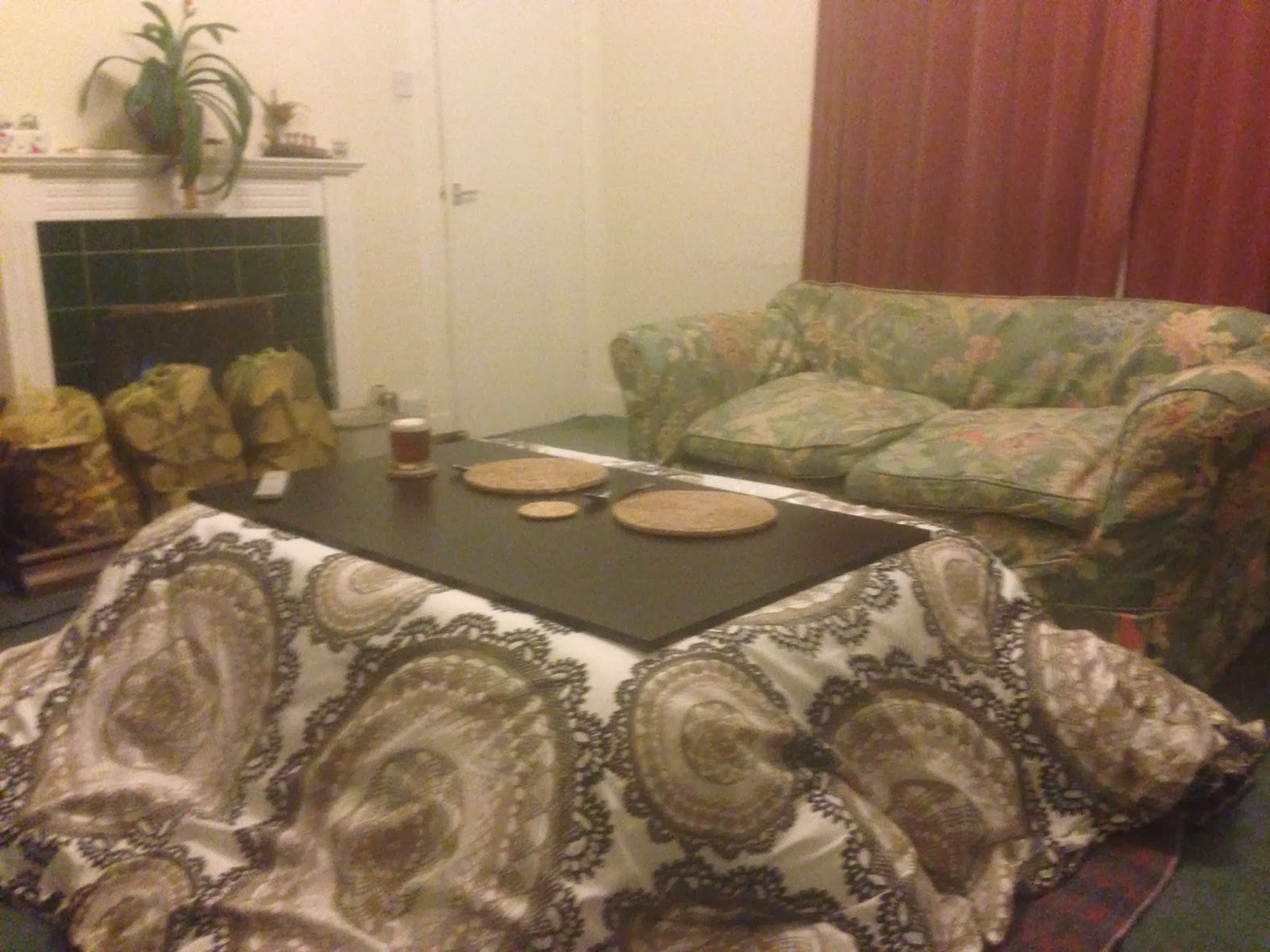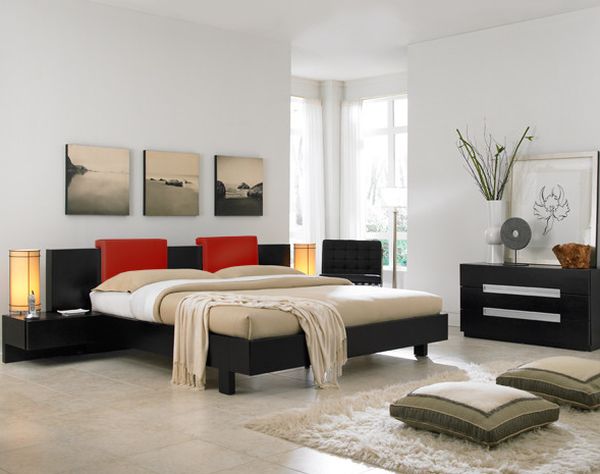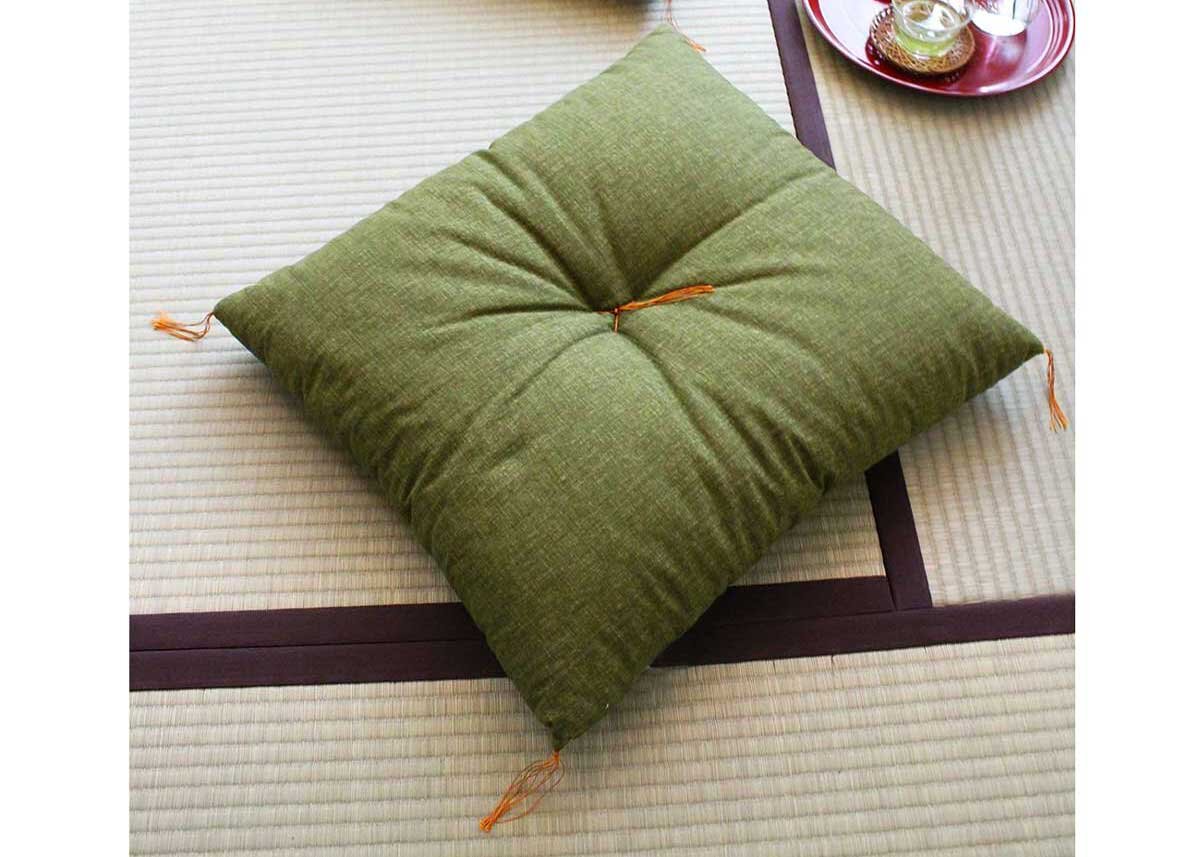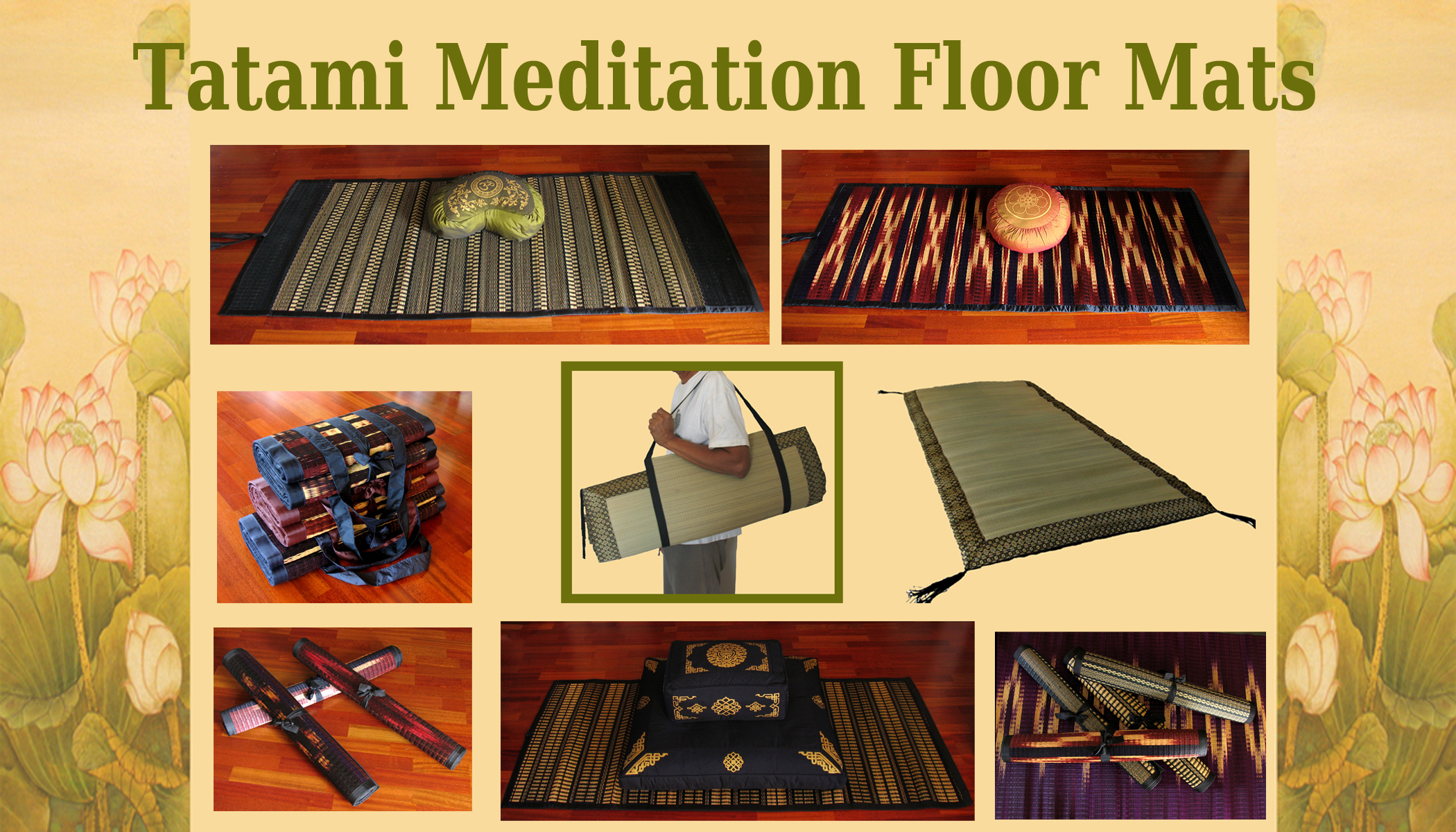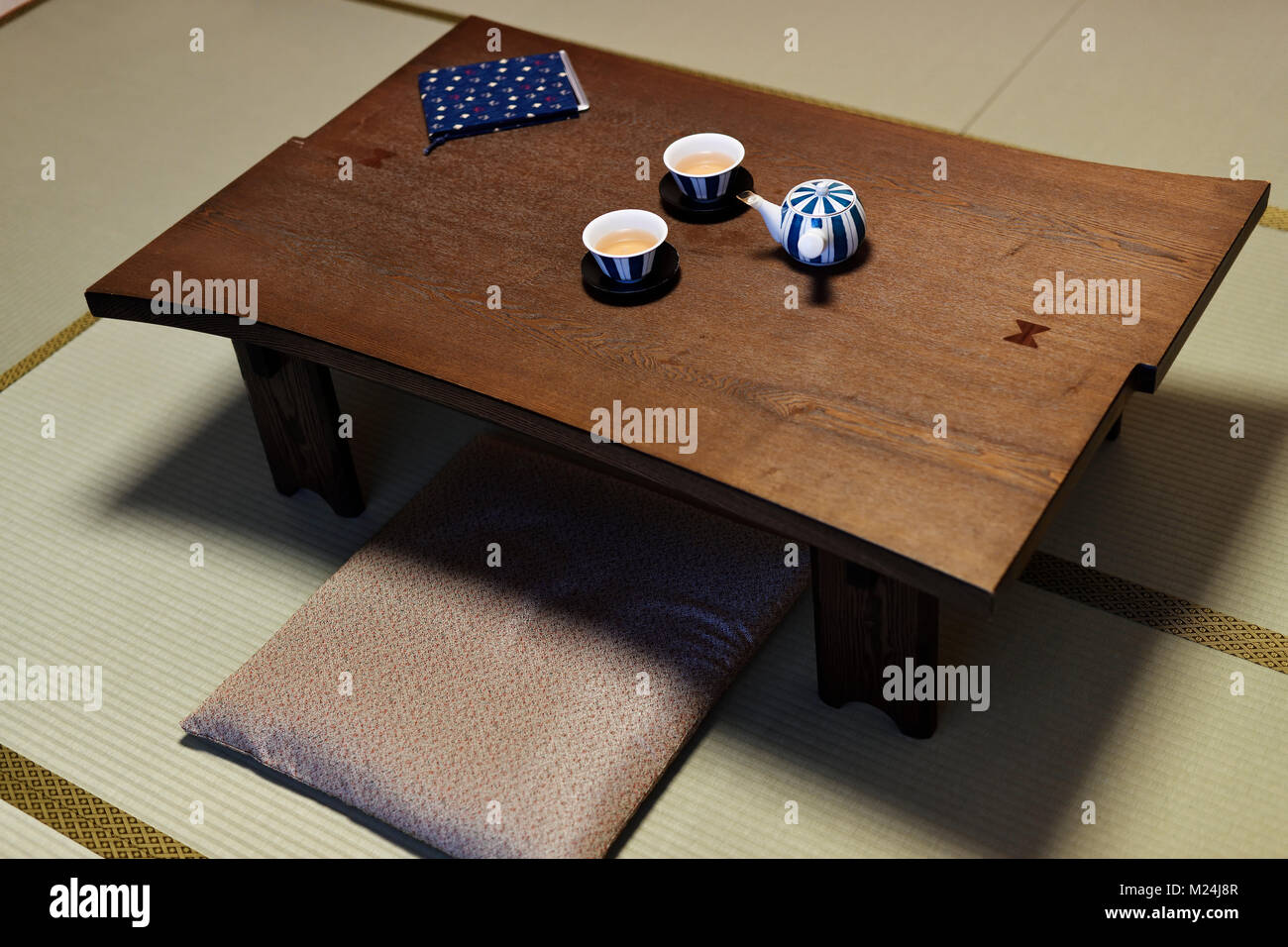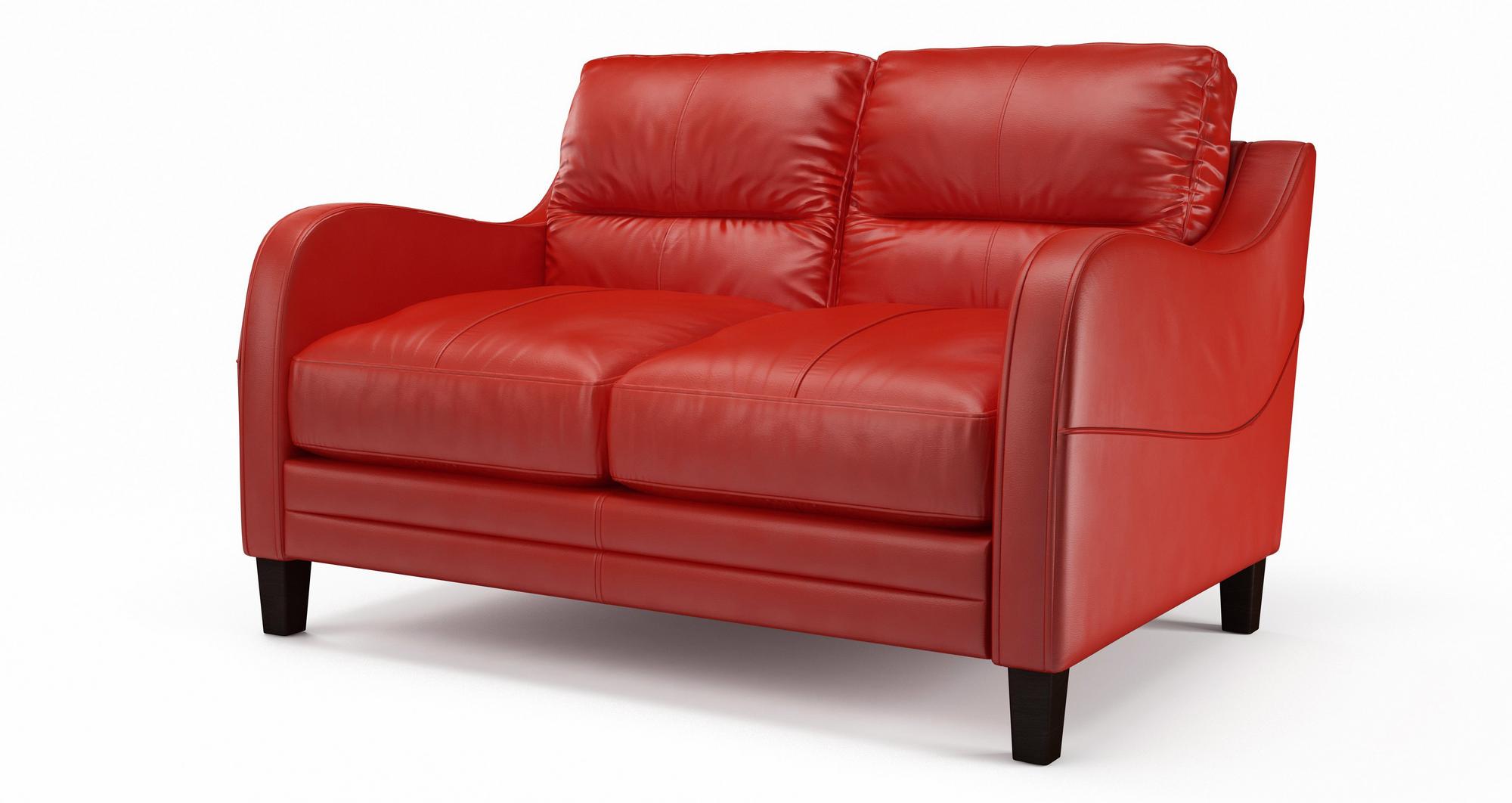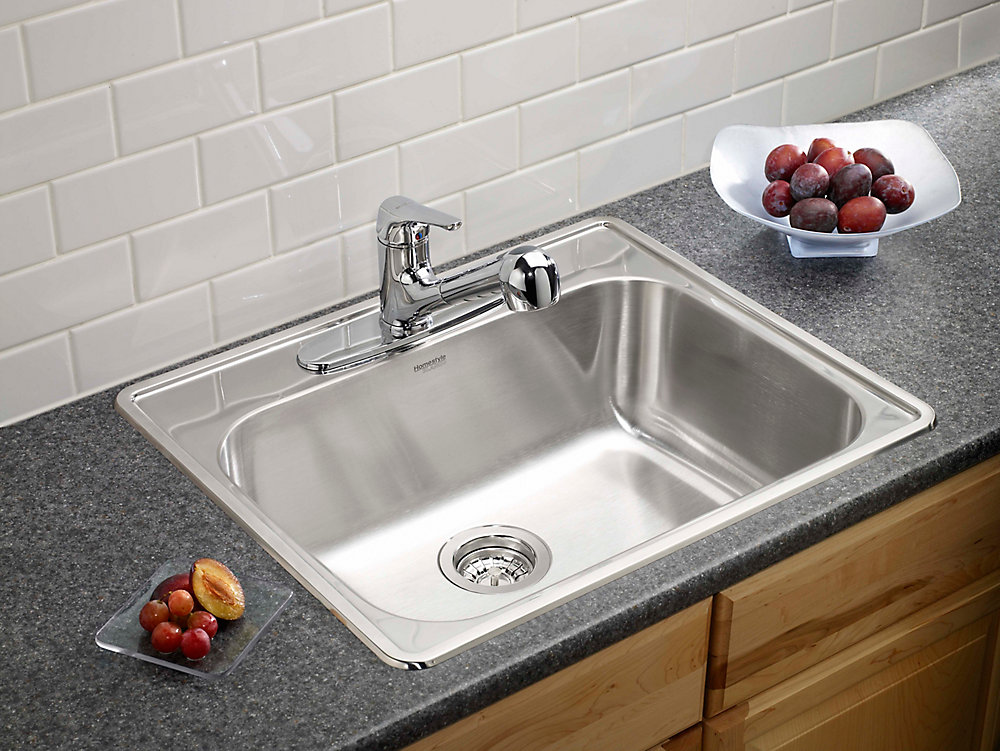Japanese tatami mats are a staple in traditional Japanese homes. These mats are made of woven rush grass and are known for their durability and natural beauty. In Japanese culture, tatami mats are a symbol of comfort and harmony, making them the perfect addition to any living room. One of the main benefits of tatami mats is their ability to regulate temperature. The woven material allows for air circulation, keeping the room cool in the summer and warm in the winter. This makes tatami mats not only comfortable but also energy-efficient. In addition to their functional benefits, tatami mats also add a touch of elegance to any living room. The natural color and texture of the mats create a serene and calming atmosphere, perfect for relaxation and mindfulness. For a more modern twist, you can also find tatami mats in various colors and patterns, allowing you to customize your living room to your personal style.Japanese Tatami Mats
Similar to tatami mats, traditional Japanese floor mats are also made of woven natural materials such as rush grass or straw. However, these mats are typically larger in size and can cover a larger area of the floor. One of the unique features of traditional Japanese floor mats is their ability to be rolled up and stored away when not in use. This allows for flexibility in design and space-saving capabilities. Another benefit of traditional Japanese floor mats is their versatility. They can be used not only as a sitting or sleeping surface but also as a decorative element. You can layer multiple mats on top of each other for a more cushioned and comfortable sitting experience. Traditional Japanese floor mats are also great for those who prefer a minimalist and natural aesthetic in their living room. They add a touch of Japanese culture and simplicity to any space.Traditional Japanese Floor Mats
Shoji screens and mats are another essential element in Japanese living rooms. These traditional sliding doors and room dividers are made of translucent paper and wooden frames, giving the room a soft and diffused light. In addition to their functional purpose, shoji screens and mats are also known for their beautiful and intricate designs. The paper can be decorated with hand-painted motifs or calligraphy, making each piece unique and a work of art. Shoji screens and mats are a great way to add privacy and separation in a living room while still maintaining an open and airy feel. They can also be used as a backdrop for other decorative elements such as plants or artwork. For a more modern twist, you can find shoji screens and mats with LED lights, creating a stunning and contemporary look.Shoji Screens and Mats
In Japanese culture, futon mattresses are a common sleeping surface. These mattresses are thinner and firmer than traditional Western-style mattresses, making them easy to fold and store away during the day. Futon mattresses are not only functional but also comfortable. The firmness of the mattress provides support for the body, promoting better sleep and reducing back pain. In a Japanese living room, futon mattresses are typically placed on top of tatami or traditional floor mats, creating a cozy and inviting sleeping area. They can also be used as a seating area during the day, making them a versatile addition to any living room. For a more modern and convenient option, you can also find futon mattresses that can be easily converted into a sofa or chair.Futon Mattresses
For a more casual and relaxed seating option in a Japanese living room, floor cushions are a must-have. These cushions are typically filled with buckwheat hulls or foam, providing support and comfort for sitting on the floor. Japanese style floor cushions come in various sizes and shapes, allowing you to mix and match to create a comfortable and inviting seating area. They can also be easily stored away when not in use. These cushions are also a great way to add a pop of color and texture to a living room, making it more visually appealing and comfortable.Japanese Style Floor Cushions
Woven straw mats, also known as igusa mats, are another traditional Japanese floor covering. These mats are made of woven straw and are known for their durability and natural scent that is said to promote relaxation and calmness. In Japanese culture, igusa mats are often used in tea ceremonies and meditation practices. However, they are also a popular choice for living room flooring due to their natural beauty and functionality. One of the unique features of igusa mats is their ability to absorb moisture and odor, making them a great choice for humid environments. They are also easy to clean and maintain, making them a practical option for any living room.Woven Straw Mats
Bamboo floor mats, also known as bamboo rugs, are a popular choice for those looking for a more modern and eco-friendly option. These mats are made of thin bamboo strips woven together, creating a sturdy and stylish flooring option. Bamboo floor mats are not only durable and easy to clean, but they also add a touch of natural warmth to any living room. The light color of the bamboo can brighten up a room and make it feel more spacious. These mats are also a great option for those who prefer a more minimalist and modern style in their living room. They can be paired with other natural materials such as wood and stone for a cohesive and calming aesthetic.Bamboo Floor Mats
Kotatsu mats are a unique and cozy addition to a Japanese living room. These mats are placed on the floor and are used in conjunction with a kotatsu table, which is a low table with a heater underneath. Kotatsu mats are typically made of soft and fluffy materials such as fleece or cotton, providing a comfortable and warm seating area during the colder months. They also come in various designs and patterns, making them a fun and decorative element in a living room. In addition to their practical use, kotatsu mats are also a symbol of togetherness and family bonding in Japanese culture. Gathering around the kotatsu table for a warm meal or playing games is a popular winter activity in many Japanese households.Kotatsu Mats
Japanese floor pillows, also known as zabuton, are another comfortable and versatile seating option for a living room. These pillows are typically square or rectangular in shape and are filled with soft materials such as cotton or buckwheat hulls. Zabuton pillows are perfect for creating a cozy and relaxed atmosphere in a living room. They can be used alone or paired with other seating options for a more comfortable experience. They can also be stacked and used as a backrest for sitting on the floor. For a more stylish look, you can find zabuton pillows with beautiful and intricate designs, adding a touch of elegance to any living room.Japanese Floor Pillows
Tatami zabuton mats are a combination of two traditional Japanese floor coverings, tatami mats, and zabuton pillows. These mats are typically made of woven rush grass and are filled with soft materials, providing a comfortable and supportive sitting surface. Tatami zabuton mats are a popular choice for those who want the benefits of both tatami mats and zabuton pillows in one product. They are also a great option for those who prefer a more minimalist and streamlined look in their living room. These mats are not only practical but also enhance the overall aesthetic of a Japanese living room, making it more inviting and cozy.Tatami Zabuton Mats
The Traditional Japanese Living Room: A Unique and Inviting Space

The Importance of Mats in Japanese House Design
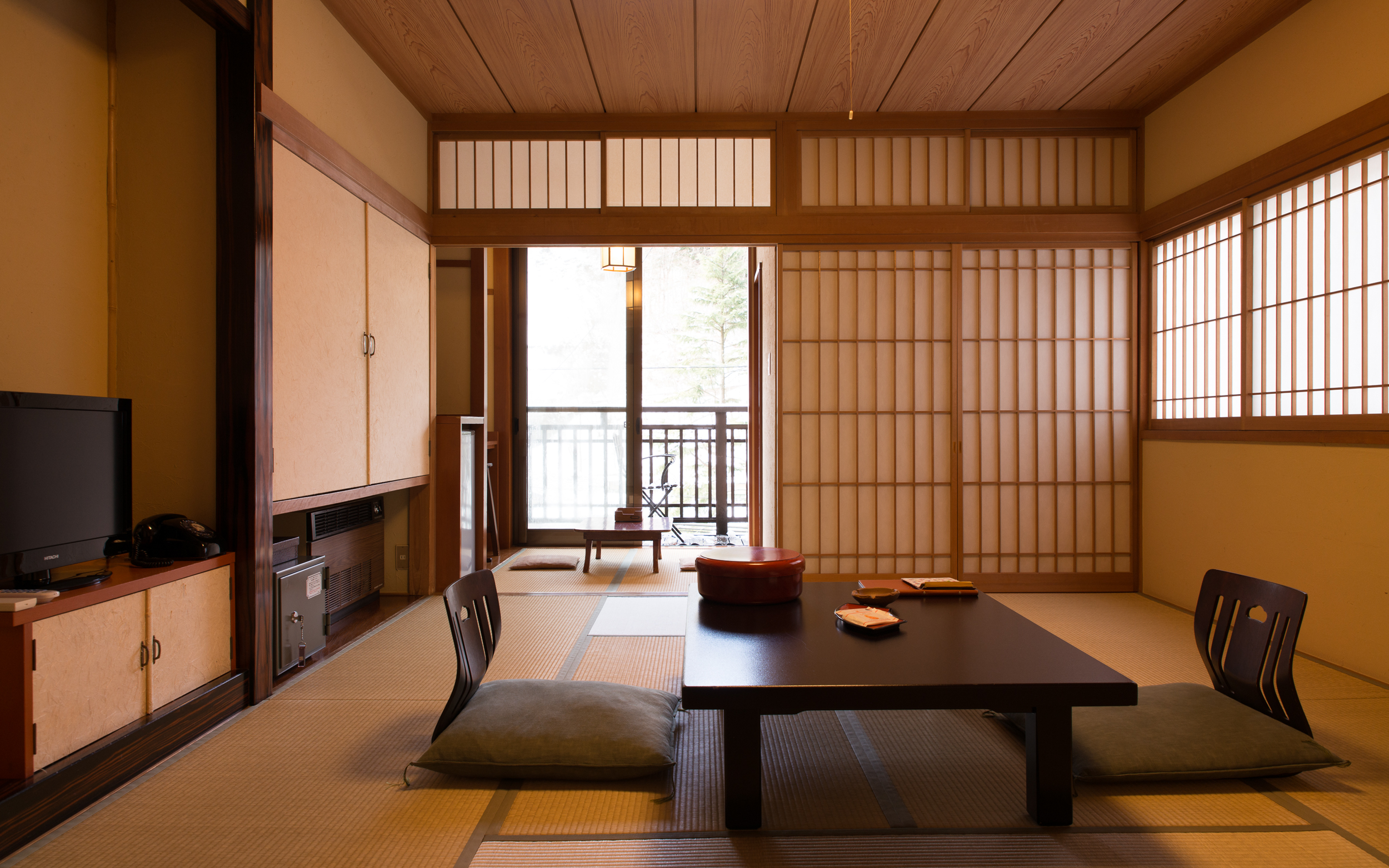 In Japanese culture, the living room is considered the heart of the home. It is a space for relaxation, gathering with family and friends, and practicing traditional customs. The design of a Japanese living room is centered around creating a peaceful and harmonious environment, and one of the key elements of this design is the use of
mats
. These
mats
, known as
tatami
, are an essential part of Japanese house design and are used to cover the floor of the living room.
In Japanese culture, the living room is considered the heart of the home. It is a space for relaxation, gathering with family and friends, and practicing traditional customs. The design of a Japanese living room is centered around creating a peaceful and harmonious environment, and one of the key elements of this design is the use of
mats
. These
mats
, known as
tatami
, are an essential part of Japanese house design and are used to cover the floor of the living room.
The History and Significance of Tatami Mats
 Tatami mats have been a part of Japanese culture for centuries, dating back to the 8th century. Originally made of rice straw, these mats were used as bedding for sleeping and sitting on. Over time, tatami mats became an important part of interior design in Japanese homes, especially in the living room. They are made from natural materials such as rice straw, rush grass, and wood, and are known for their soft and gentle texture.
Tatami mats have been a part of Japanese culture for centuries, dating back to the 8th century. Originally made of rice straw, these mats were used as bedding for sleeping and sitting on. Over time, tatami mats became an important part of interior design in Japanese homes, especially in the living room. They are made from natural materials such as rice straw, rush grass, and wood, and are known for their soft and gentle texture.
The Benefits of Tatami Mats in the Living Room
 Aside from their aesthetic appeal, tatami mats have several benefits for the living room space. One of the main benefits is their ability to regulate temperature and moisture. The natural materials used in tatami mats allow for air circulation, keeping the room cool in the summer and warm in the winter. They also absorb moisture, making them ideal for the humid climate of Japan.
Another benefit of tatami mats is their durability. When properly maintained, these mats can last for decades, making them a cost-effective option for flooring in the living room. They are also easy to clean and maintain, making them a practical choice for busy households.
Aside from their aesthetic appeal, tatami mats have several benefits for the living room space. One of the main benefits is their ability to regulate temperature and moisture. The natural materials used in tatami mats allow for air circulation, keeping the room cool in the summer and warm in the winter. They also absorb moisture, making them ideal for the humid climate of Japan.
Another benefit of tatami mats is their durability. When properly maintained, these mats can last for decades, making them a cost-effective option for flooring in the living room. They are also easy to clean and maintain, making them a practical choice for busy households.
The Versatility of Tatami Mats in Japanese House Design
 Tatami mats are not limited to just the living room. They can be used in other areas of the house, such as bedrooms and meditation rooms. They can also be easily combined with other flooring materials, such as wood or carpet, to create a unique and modern look.
In conclusion,
tatami mats
are an essential element of traditional Japanese house design, particularly in the living room. They add a touch of elegance and warmth to the space, while also providing practical benefits such as temperature regulation and durability. Whether you are looking to create a traditional Japanese living room or simply want to add a touch of Japanese influence to your home,
tatami mats
are a must-have.
Tatami mats are not limited to just the living room. They can be used in other areas of the house, such as bedrooms and meditation rooms. They can also be easily combined with other flooring materials, such as wood or carpet, to create a unique and modern look.
In conclusion,
tatami mats
are an essential element of traditional Japanese house design, particularly in the living room. They add a touch of elegance and warmth to the space, while also providing practical benefits such as temperature regulation and durability. Whether you are looking to create a traditional Japanese living room or simply want to add a touch of Japanese influence to your home,
tatami mats
are a must-have.
